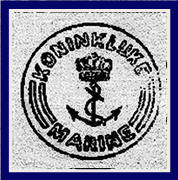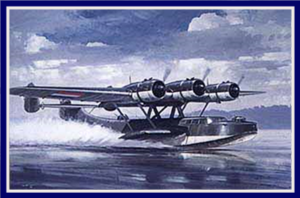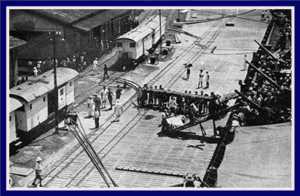
DUTCH INDONESIAN MEMOIRS 1941 - 1948
MLD Marine Luchtvaart Dienst
or
DNAS Dutch Naval Air Service
KONINKLIJKE LUCHTMACHT Netherlands Royal Air Force
HANGER 6 Naval Airstation Morokrembangan
PAGE 1. 2ND MEMOIR ACCOUNT FROM HANGER 6
W. J (WIM) VERSNELL
Summer 1941 and Wim is 17 years old.
He sent me these words by fax from Australia. Each page would come individually over weeks as he wrote them.
I am as ever grateful to him for helping to fill in my fathers past
I was born in Java from Dutch parents. The fact that I was born in Java made me different than the Dutch from Holland. I spent my childhood in Java, at first on Rubber plantations, where my father was employed till the depression in the early thirties. From then on, we lived in Malang and Cirebon. It was the best time of my life and I often wish I could do it all over again, but times change and there is no going back to the past.
In 1941 there appeared an advertisement in the daily paper, with a photo of a line of sailors of which one was blanked out, with just the outline showing. Underneath this photo was printed:
"There is room for one wide awake young man!"
They wanted men for the “MLD Marine Luchtvaart Dienst” (In English the D.N.L.A, Dutch Naval Air Service. The equivalent in England of the F.A.A, Fleet Air Arm)
There was where to apply and time of service, which in this case was eight years after finishing a five-year training, including license for pilot. I was 17 at that time and applied. There were over one thousand applicants and of these about 130 were chosen after vigorous tests for flying ability, a medical and overall fitness. On the 15th of August 1941 those 130 men were to recruit onto the Naval Airbase Morokrembangan, Surabaya. Then suddenly everything changed on December 7th with the outbreak of the war against Japan.
The MLD had received new Catalina flying boats from the US. Now they found out that the bombs we had in stock for the Dornier Do 24 flying boats did not fit under the wings of the new Catalina's. Special brackets had to made to fit around the Dornier bombs, so they could be slung under the Catalina's, and that is where our boys from Hangar 6 came to good use. From morning to night, we were busy with filling, welding and bashing to make as many bomb-brackets as possible.

MLD Dornier Do24
In the meantime, our military training was not put aside. We had to march to the workshops in the morning and back to Hangar 6 at night and do some theoretical lessons and even now and then some rifle drill, so we would not forget. Also, there was air-raid drill and one day in January 1942 it was an air-raid for sure, but it was false alarm as the approaching planes were US planes that came from the Philippines.
On one of the planes was an American sailor, who had been shipwrecked off the Chinese coast, and he was billeted with us in Hangar 6. He was full of Chinese tattoos, but had a lot of stories to tell us, so we got an idea what was in store for us in the months to come. Also, after the fall of Singapore there arrived a few Bristol Blenheim's on our base. There was a squadron of Kittyhawk's stationed on Perak Airfield, belonging to the air force of the Dutch East Indies Army, to help us defend our base. They could not spare any more as most of the Army's Airforce had been shot down by trying to help the British defend Singapore, which fell against all expectations and made the Dutch East Indies an easier target, as the Japanese main thrust was against the D.E.I., and not as so many wrongly believe, against Australia.
Of course, the Japanese had to bomb Darwin as they needed to protect their left-flank while attacking the D.E.I. Australia was put on the menu for later. Several Dutch submarines were sunk with the defence of Singapore, as the Dutch had to drop all their experience with submarine warfare, primarily because they had to adopt the British way and the same went for the training and experience the MLD had, working together with the submarines and submarine launched floatplanes, in locating any Japanese shipping. This too was abandoned, because of allied interference.
Following is a statement from the Japanese CNC, General "IMAMURA" who commanded the Japanese invasion forces.
“The greatest mistake of the Dutch Government concerning the defence of the East Indies seemed to be that it transferred supreme command in the Dutch East Indies from the Governor-general ( ter Pooten ) to General Wavell of Britain, who commanded only 10,000 British and Australian forces altogether.
In fact, General Wavell fled to India by air when the Japanese troops began to land and move forward in East and West Java, leaving the allied forces behind. As a result, the remaining Allied forces did not follow the lead of Commander ter Poorten at all, making it very difficult for him to carry out his "STRATEGY". I think it was natural that the commander lost the will to fight. Had the Allied forces in Java been commanded by the Governor General, the Japanese army would have had to face a tough battle.
Yet is has been the Dutch who have always borne the brunt of the blame for the unsuccessful defence of the NEI in 1942."
Reference for the statement of General Imamura:
Anthony Reid and Oki Akira:
"The Japanese Experience in Indonesia"
Selected Memoirs 1942-1945. Monographs in International Studies Southeast Asia Series No 72
(Athens, Ohio: Ohio University, 1986) page 48.
Pasuran to the "Kota Baroe" at Tjilatjap
At the end of January / beginning February the MLD found it to be irresponsible to leave our group of trainees in Morokrembangan, as air-attacks from the Japanese were imminent and most of us were underage, spanning from 14 to 17 years of age. We were sent to an auxiliary base near Pasuruan, called Lake Grati. There was an old sugar mill there, where we were billeted.
Beds were already there also our workbenches and tools. So, the organisation had been perfect. They even had installed an air-raid siren. We had to make our own bomb shelters from the steel sugar train railway sleepers.
The lake of Grati was close by and there were even a couple of old Fokker T8-W floatplanes in the lake, hidden by overhanging trees. One day there was an air raid and we saw a Kittyhawk being chased by a Zero-fighter. They both disappeared in a cloud and after a while only the silver Zero re-appeared. The Kittyhawk must have been of the squadron stationed at Perak-airfield, I think the Zero shot it down.
Quite a few times we had to march for about 5km to a bit of a hill in which was an old volcano crater filled with beautiful blue and cold water, where we were allowed to swim. At the weekends the ones not on duty (we had three divisions, A, B and C, of which one was on duty every three days) went with a truck to the association clubhouse in Pasuruan, where we could get a decent meal and sat around after in the bar and our friends, the Marines taught us the art of drinking beer. Also, I picked up the habit of smoking there, which I haven’t been able to give up for 59 years now. I still like a glass of beer now, but in moderation. Most of the more useful things we were taught I have already forgotten but who cares.
Now and then, when on duty, I had to man the telephone-exchange and after a few wrong connections I got the hang of it, and of course during work hours we were busy again filing our blocks. Life went on and we did not hear much outside news.
On the night of 28 February, we were woken up and had to pack our kitbags and had to line up outside. There were about half a dozen trucks standing ready and we were told that we were going back to Soerabaya. That was all they told us, and we thought the war was over. Arriving at Soerabaya we went another direction and finished up at the railway station for interstate trains. We were told then that we were going to Bandung to continue our training with the Army Air Force based there.
The whole station was full of trainees and cadets of all branches of the Navy. We began to smell a rat and couldn't get off the station as the entrances were guarded by Military police.
We boarded the train after some commotion and orders. When the train was full, there were still a lot on the platform, and they were to board a second train and maybe a third. As far as I know all the Hangar VI mob were on the first train, and far as I know it was the first train, but don't take my word for it, as there well might have been one ahead of us.
When the train steamed out, there were a lot of Javanese boys (katjongs) standing beside the railway outside Soerabaya, giving us the Victory sign. They must have thought we were on our way to the frontline. Little did they know that we had our escape-boots on and neither did we. It was the original Victory-sign they gave us and not two fingers up, as that had not been invented yet. Our first stop was Jogjakarta and one of my mates, whose parents lived there, told me he was getting off the train and getting out of the station. He did not get past the entrance, as the Military Police were there guarding it. One took him back to the train and kept his eye on him.
Off we went again as far as Kroja, where the line switched, the train slowed down and we went onto the left-hand-track. Straight through would have meant Bandung, but we were on our way to Tjilatjap (Cilacap), the only harbour of significance on the South coast of Java. It started to get dark on this day of March lst. By the time we reached the harbour-side it was dark. There were some field kitchens set up, where we had our last meal, or whatever it was, on Javanese soil, we were to sleep in the train, and it was a bit of a scramble to find a spot. In the meantime, another train had pulled up behind us, and I think another one later. I did not hear it, as I was fast asleep.

Tjilatjap February 1942
Wounded from USS Marblehead and Houston being offloaded.
I saw it the next morning as it was standing on a siding next to us, between us and the harbour. Two sergeants (Petty Officers,) who were in charge of our group rounded us up and we had to stay together until it was our turn to board one of the ships. There were four cargo ships lying offshore, as the harbour was too shallow for the ships to get to the wharf. For loading big rafts were used. The whole morning was spent to get all the men onto the rafts and from there on board. As usual come first, get served last, so our group finished up on ship No.4, which turned out to be lucky for us. We got onto the Kota Baroe, which was a 9000-ton Rotterdam Lloyd cargo ship with about ten passenger huts, reserved for the gentlemen officers, a couple of them complete with wife- --How?????—
We finished up in the cargo holds or on deck, or anywhere you could find a place, as long as it was not midships. That was out of bounds. On the rear deck were two fuselages of Lockheed Electra aircraft, one on each side. The wings were stored in the aft hold. Those planes were ordered by the Army Air Force, but there had not been any time to unload them, as the Kota Baroe had just arrived the night before.
Lucky for us, the Kota Baroe was a motorship and not a steamer, as they leave a tell-tale plume of smoke and could be seen for miles around. At sunset the first ship left, followed half an hour later by ship No.2. Another half hour later the Tawali left as No.3. We were No.4 and left last.
No smoking or loud talking on deck. The sea was calm, and we made good progress on our way to Freemantle, Australia. We were all looking for a place to sleep. The cargo hold was hot and stuffy, and everybody was looking for a place on deck. I started to think how my parents were going. I knew my father was, last time I heard of him in the “Landstorm” (Dad's Army) in Batavia and my mother was at home, alone.
Journey to Ceylon
After the war in Java my mother told me that my father had arranged accommodation for her in a hotel, so she wouldn't be on her own.
In the early morning the Kota Baroe suddenly changed course and sailed towards the west. It was March 3rd, 1942, we all wondered why, there were rumours going round that there was a large Japanese fleet in the Indian Ocean, which later on proved to have been true. Ship No1 got torpedoed and went down with all souls. Ship No 2, which sent the SOS got boarded by crews of Japanese surface ships and taken prisoner. I spoke to one of the men that were aboard her after the war. He had been one of our Hangar VI boys who by mistake boarded the wrong ship. He spent the war years as a POW working in coalmines near Nagasaki. He told me that the Japanese officer in charge of the boarding party jumped onto the railing pulled out his sword and walked up and down the railing abusing the men and that on the open ocean with the ship rolling. He must have been some sailor.
Meanwhile we continued west and changed again to Northwest on the way to Colombo. About a day from Colombo, we were followed by a warship, which signalled to us to slow down, as he was our escort. Lucky for us there was a British warship to the north of us, who radioed to ignore that last message, as it was a Japanese warship did that not know the codeword. We might have been taken at the last possible instant.
There had been no time to load up fresh supplies in Tjilatjap and all we got to eat was a cup of cooked rice and half a potato per day and one cup of water for eleven days. We had to queue up for this morsel all around the ship and had to pass the porthole of the galley where the steaks were fried for the "gentlemen” midships which did not help the situation. One enterprising boy saw that the floor of the hold was covered with planks. He lifted one up and lo and behold the hold was filled with tinned fruit, labelled "Libbys”. He started passing them around and was caught. This was supposed to be the property of the importer in Java and paid for. As punishment the boy had to wash the clothes for the gentlemen midships with saltwater soap for the rest of the trip. That was called “democracy” in those days. I wonder would the treatment be the same these days under the same circumstances. After a day's work his hands looked like sponges.
Anyway, we arrived safely in Colombo on the eleventh day and anchored in the middle of the harbour. I can't remember if the Tawali beat us to Colombo, but we saw her anchored there. There was a Dutch ship lying there too called the Tjibadak from the JCJL (Java, China, Japan Line,) which was transferred to a transit ship with canvas covers over all decks. We were transferred to the Tjibadak and given the first meal after the trip, also British sailors uniforms and caps. The caps we quickly got rid of, as we liked ours better. We had a good shower with plenty of fresh water and were allowed to go ashore.
If you came from Java or anyplace and stepped out in Colombo it was like day and night. I never saw such a dirty place with crows flying everywhere. We were not game to order chicken, as it could be crow and no amusement anywhere.